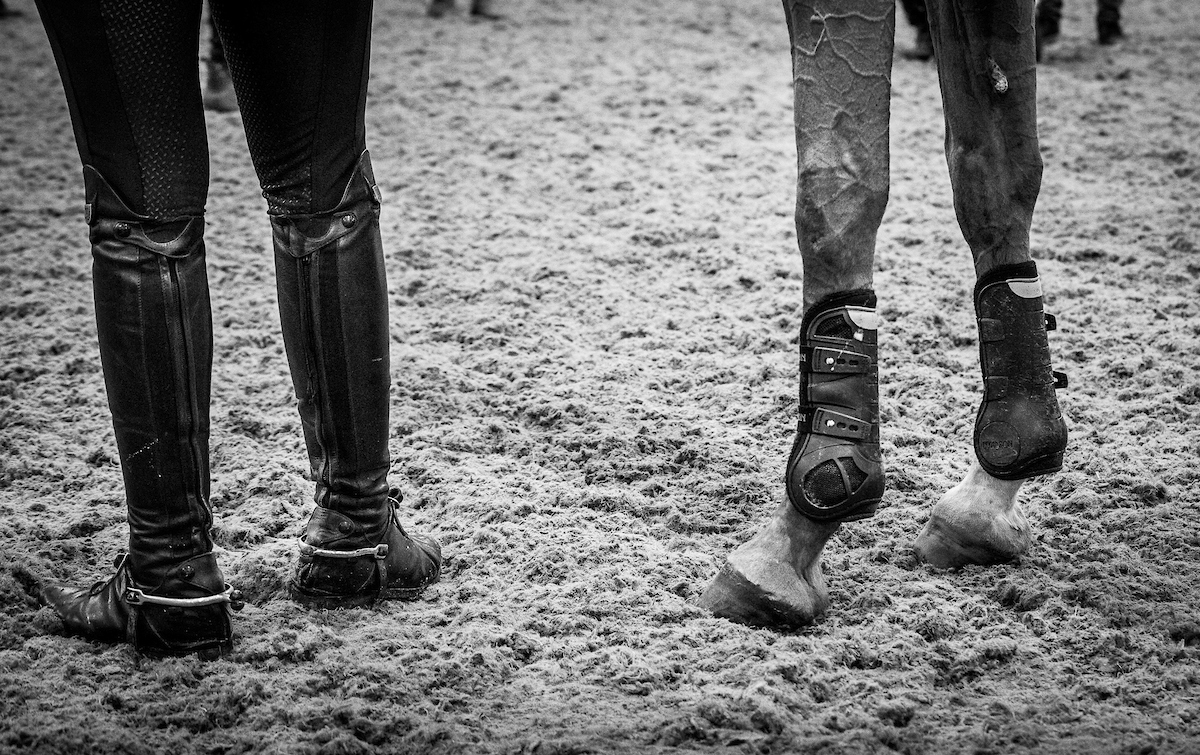Lovely summer weather often means dry, hard ground that can test the condition of our horse’s hooves, joints, and bones due to the added forces that will be imparted on them from the lack of give in the ground. We are often asked what can be done nutritionally to support hooves, joints, and bones during this time of year. Here are some key suggestions:
- For optimal hoof growth and maintenance, we need to feed a balanced diet, with adequate levels of vitamins and minerals. Focus on Biotin, which should be provided at a minimum of 15mg per day, as well as Methionine, Calcium, Copper, and Zinc. These are some of the key supporting vitamins and minerals that aid hooves.
- Hoof Support and Ultimate Balancer are good products to use if you’re focusing on hoof quality
- Much research has been performed on joint health to identify the best supplements to support joint fluidity. Maintaining healthy joints for as long as possible is key, and therefore adding joint supplementation before encountering issues is something to consider. Glucosamine and MSM have been heavily featured in the research, focusing on joint fluid maintenance and a reduction in inflammation. More recently, Marine Algae, a source of DHA, and other omega 3 oils have gained increase focus around their contribution to the maintenance of joint and connective tissue structure. Reduction of oxidative stress has been shown to have an impact, so antioxidants like vitamin E, Dodson & Horrell’s QLC, and even olive leaf extract may all have added benefit.
- Joint Support has key ingredients discussed here
- Support of the structure and function of bone itself is one of the more modern and advanced concepts with regards to the encouragement of long-term soundness in horses. Bone turnover can be influenced by exercise and nutrition and therefore considering bone strength at all stages of the horses’ life, from birth to full training is recommended.
- Bone Support incorporates Marine Algal Calcium, vitamin K (Menadione), Vitamin D, omega fatty acids, and Silica to help promote the bone strength and minimize micro cracks and bone stress the would contribute to splints, OCD and bone thinning potentially leading to fractures.*
References
- Armelin, M.J.A., Avila, R.L., Piasentin, R.M., Saiki, M., 2003 Effect of chelated mineral supplementation on the absorption of Cu, Fe, K, Mn and Zn in horse hair. Journal of Radioanalytical and Nuclear Chemistry 258 (2), 449-451.
- Byron, C.R., Orth, M.W., Venta, P.J., et al., 2003. Influence of glucosamine on matrix metalloproteinase expression and activity in lipopolysaccharide-stimulated equine chondrocytes. Am J Vet Res 64, 666–671.
- Hasegawa T., Ueno S., Kumamoto S., Yoshikai Y. 2004. Suppressive effect of methylsulfonylmethane (MSM) on type ii collagen-induced arthritis in dba/1j mice. Jpn. Pharmacol. Ther. 32:421–428.
- Lowe, J.A., Lucas, D., Paganga, G., Observations on the antioxidant status of horses as influenced by supplementary dietary antioxidants. Ishii, M., 2002 Effects of vitamin E and selenium administration on pregnant, heavy draft mares on placental retention time and reproductive performance and on white muscle disease in their foals. Journal of Equine Veterinary Science 22 (5) 213-220.
- Depient, F., Bruce, R., Shangari, N., Mehta, R., O’ Brien, P.J., 2006 Mitochondrial function and toxicity: Role of the B vitamin family on mitochondrial energy metabolism. Frape, D., 2008 Vitamin requirements. Equine Nutrition and Feeding (3) 102-103.
- Josseck, H., Zenker, W., Geyer, H., 1995 Hoof horn abnormalities in Lipizzaner horses and the effect of dietary biotin on macroscopic aspect of the hoof horn quality. Equine Vet Journal 27 (3) 175-182.
- Geor R.J., Harris, P.A., Coenen, M., ed 2013 Amino acids and protein. Equine Applied and Clinical Nutrition. 114. 7: Medina, B., Girard, I.D., Jacotot, E., et al., 2002 Effect of a preparation of Saccharomyces cerevisiae on microbial profiles and fermentation patterns in the large intestine of horses fed a high fiber or high starch diet. Journal of Animal Science 80 (10), 2600-2609.
- Leatherwood JL; Gehl KL; Coverdale JA; Arnold CE; Dabareiner RA; Walter KN; Lamprecht ED. 2016: Influence of oral glucosamine supplementation in young horses challenged with intra-articular lipopolysaccharide. Journal Of Animal Science Vol. 94 (8), pp. 3294-3302
- Mével E , Merceron C , Vinatier C, Krisa S, Richard T, Masson M , Lesoeur J, Hivernaud V, Gauthier O, Abadie J, Nourissat G, Houard X, Wittrant Y, Urban N, Beck L, Guicheux J 2016. Olive and grape seed extract prevents post-traumatic osteoarthritis damages and exhibits in vitro anti IL-1β activities before and after oral consumption. Scientific Reports 6, Article number: 3352
- Woodward, A. D.; Nielsen, B. D.; O'Conner, C. I.; Webel, S. K. and Orth, M. W. 2005. Supplementation of dietary long-chain polyunsaturated fatty acids high in docosahexaenoic acid (DHA) increases plasma DHA concentrations and may increase trot stride lengths in horses. Equine and Comparative Exercise Physiology 4:71-78
- 11. Marañón G, Muñoz-Escassi B, Manley W, García C, Cayado P, Muela M, Olábarri B, León R, and Vara E 2008. The effect of methyl sulphonyl methane supplementation on biomarkers of oxidative stress in sport horses following jumping exercise. Acta Vet Scand. 2008; 50(1): 45.
- Neilsen et. Al. 2010 – marine agal calcium
- Fernandes et al (2003), Claassen et al (1995), Kruger et al (2005)- o3 vfas
- Biffin et al (2008,2010), Terachi et al (2011)- vit K
- Hintz et al (1973), Holick (2004)- vit D
- Nielsen et al (1993), O’Connor et al (2008), Lang et al (2001a, 2001b)- silica



